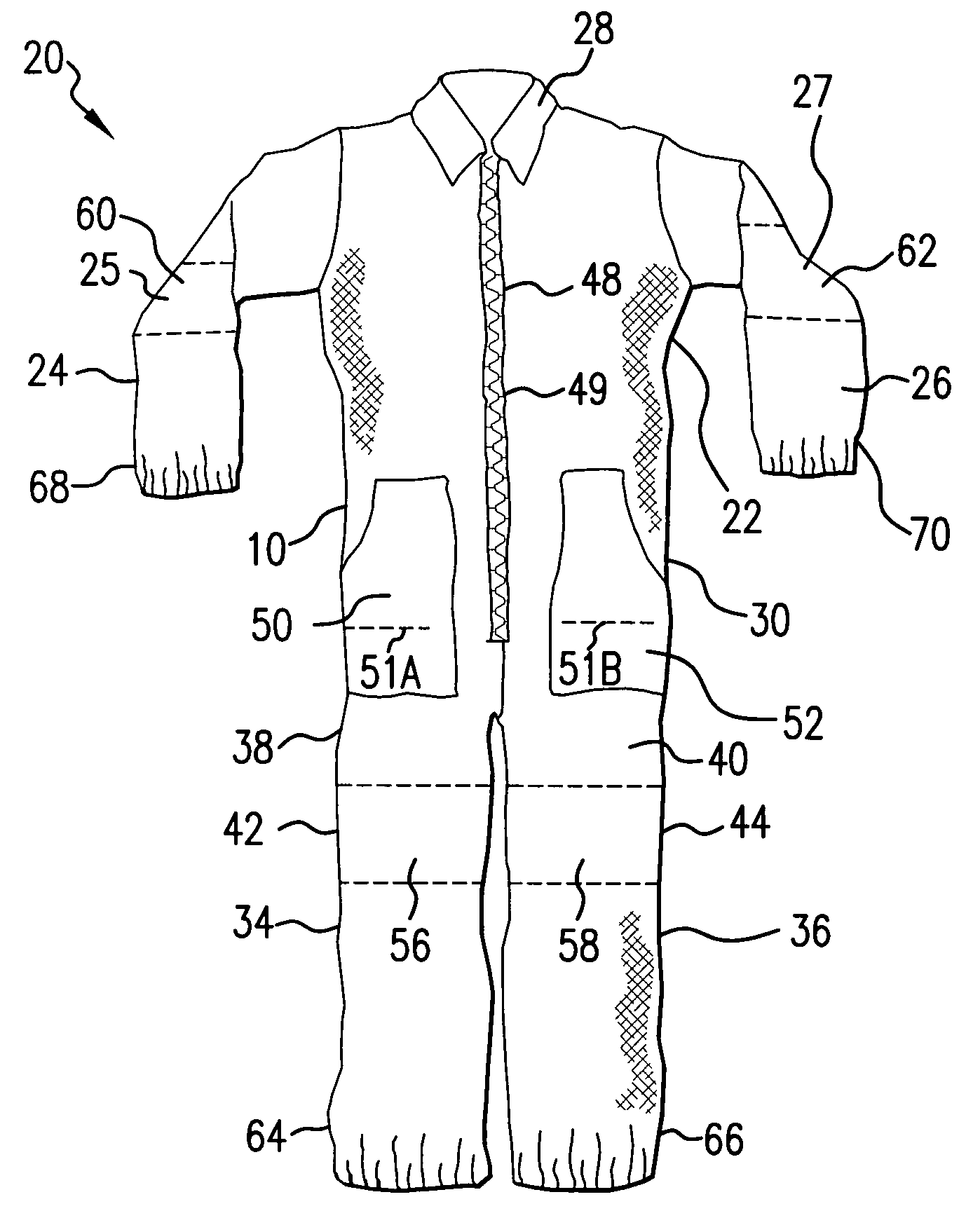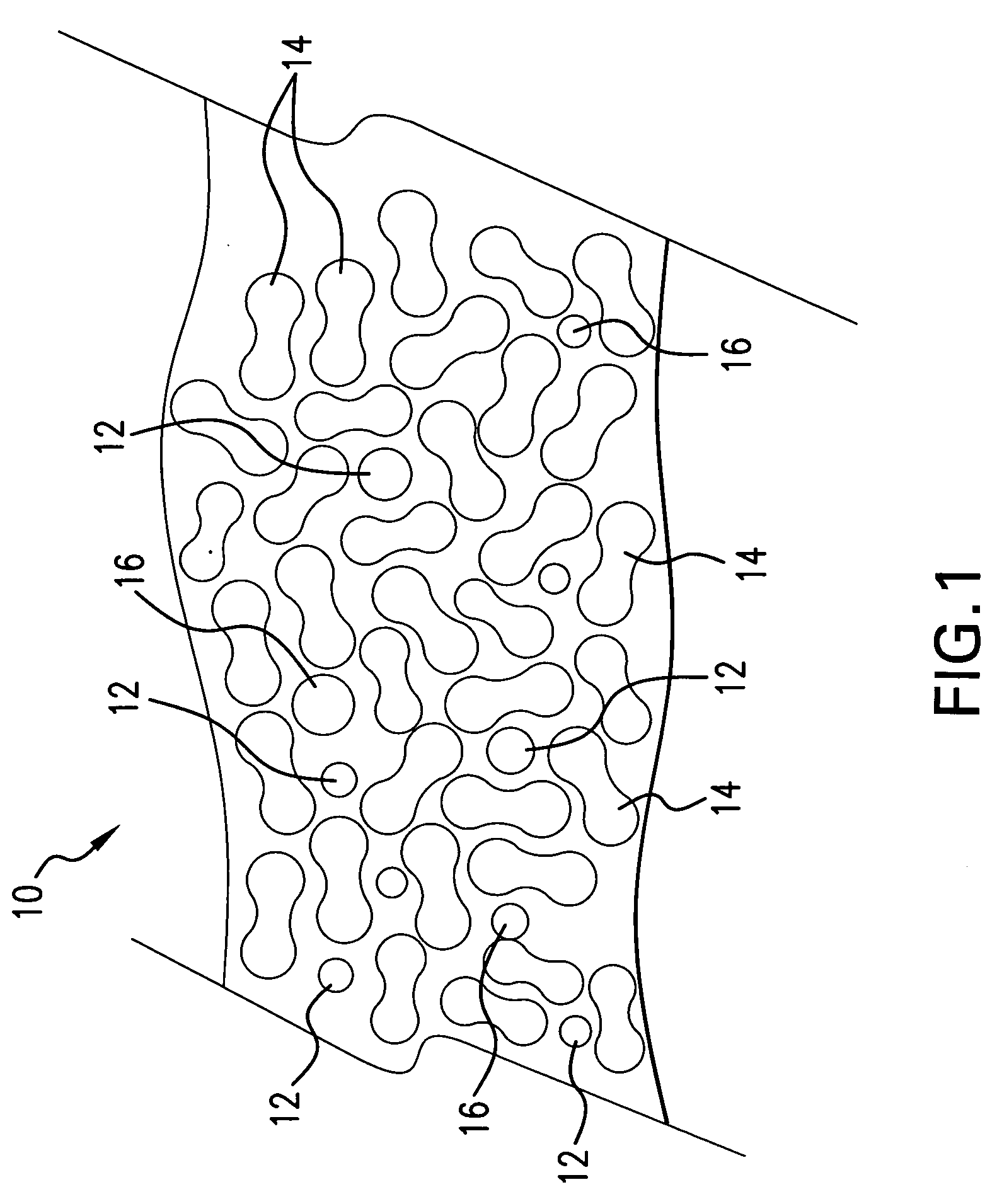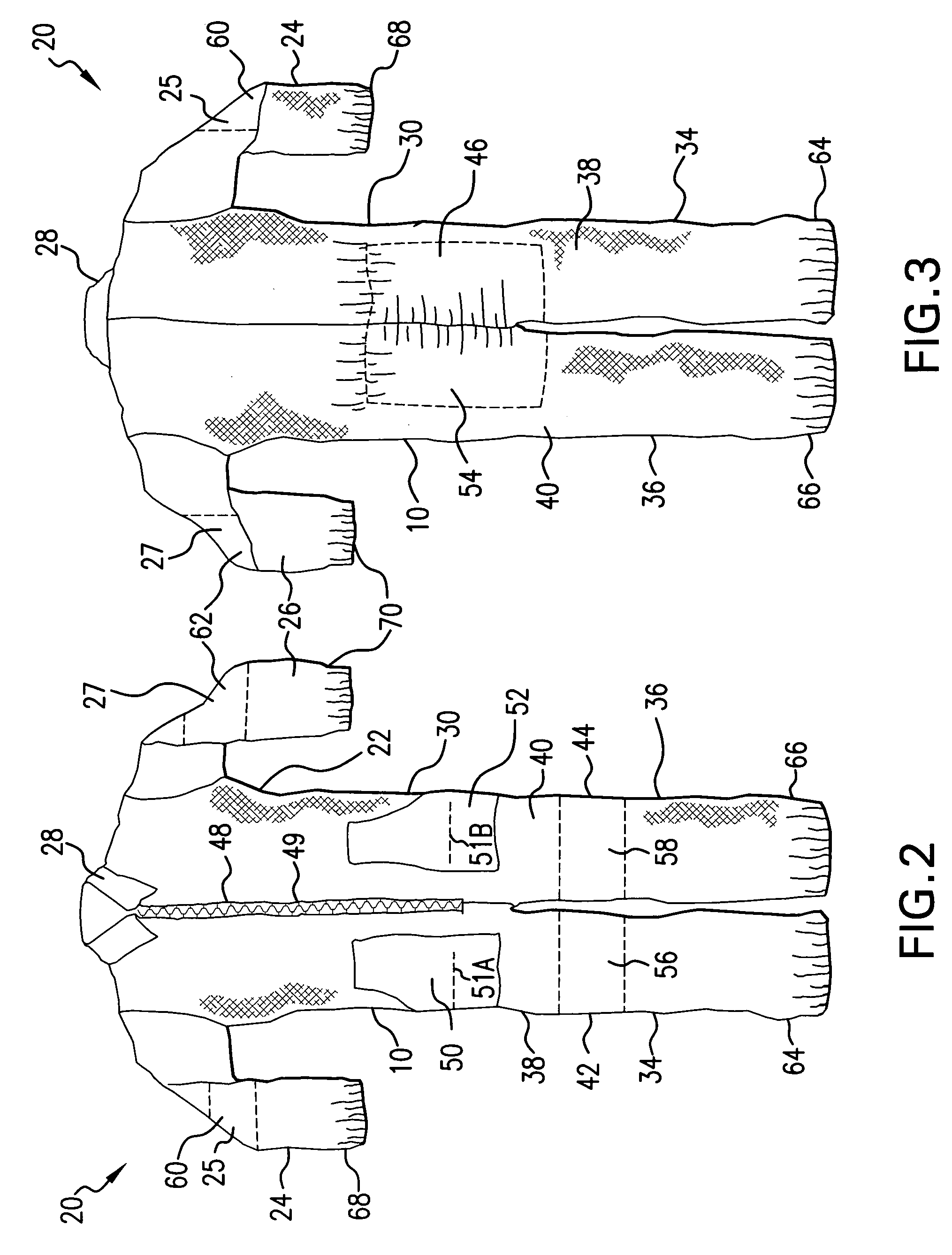Disposable non-woven, flame-resistant coveralls and fabric therefor
- Summary
- Abstract
- Description
- Claims
- Application Information
AI Technical Summary
Benefits of technology
Problems solved by technology
Method used
Image
Examples
Embodiment Construction
[0023]Although the fabric and coveralls of the present invention are discussed in terms of military applications, it is to be understood that the aforesaid fabric and coveralls may be used in non-military applications such as firefighting, law enforcement, auto-racing, aviation, search and rescue, and hazardous materials clean-up.
[0024]Referring to FIG. 1, there is shown fabric 10 in accordance with one embodiment of the present invention. Fabric 10 generally comprises a blend of aramid and electrostatic dissipative fibers. Specifically, fabric 10 comprises a blend of Kevlar® fibers 12, Nomex® fibers 14 and electrostatic dissipative fibers 16. In one embodiment, the percentages shown in Table I are used to form fabric 10:
TABLE IFIBERPERCENTAGENomex ®92.0Kevlar ®5.0Electrostatic Dissipative3.0
It is to be understood that the percentages shown in Table I pertain to one embodiment and that these percentages may be varied.
[0025]Suitable electrostatic dissipative fibers are Nobel Fiber X-...
PUM
| Property | Measurement | Unit |
|---|---|---|
| Fraction | aaaaa | aaaaa |
| Fraction | aaaaa | aaaaa |
| Fraction | aaaaa | aaaaa |
Abstract
Description
Claims
Application Information
 Login to View More
Login to View More - R&D
- Intellectual Property
- Life Sciences
- Materials
- Tech Scout
- Unparalleled Data Quality
- Higher Quality Content
- 60% Fewer Hallucinations
Browse by: Latest US Patents, China's latest patents, Technical Efficacy Thesaurus, Application Domain, Technology Topic, Popular Technical Reports.
© 2025 PatSnap. All rights reserved.Legal|Privacy policy|Modern Slavery Act Transparency Statement|Sitemap|About US| Contact US: help@patsnap.com



